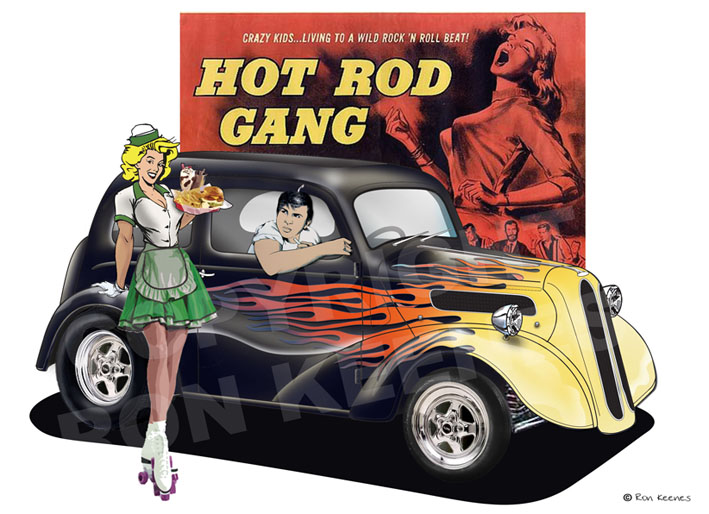
Welcome to the premier suppliers of parts & spares for your upright Ford Pop
We
cater for all upright Sidevalve British Ford models from 1937-59, and 60's models too
and can supply a large range of reproduction parts, NOS and good used
parts.
Popular 103E Anglia E494A Prefect E493A Thames Fordson 7W 7Y
100E
300E Anglia 105E Ford Cortina Mk1 Lotus
Ford Anglia E04A (1939 -1948)
The first Ford Anglia, launched soon after Britain declared war on Germany in early September 1939 and given the internal Ford model code of E04A, was a facelifted version of the Ford 7Y, a simple vehicle aimed at the cheap end of the market, with few features. Most were painted Ford black. Styling was typically late-1930s, with an upright radiator. There were standard and deluxe models, the latter having better instrumentation and, on pre-war models, running boards. Both front and rear suspensions used transverse leaf springs, and the brakes were mechanical.
The two-door Anglia is similar to the longer, four-door, E93A Ford Prefect. A bulge at the back enabled a spare wheel to be removed from its vertical outside stowage on the back of the car and stowed flat on the boot floor, which usefully increased luggage space. Some back seat leg room was sacrificed to the luggage space, being reduced from 43¾ inches in the Ford 7Y to 38½ inches in the Anglia. The Anglia replaced the 7Y saloon, but the van version of the earlier model continued to be built until 1946, after which some very minor changes sufficed to rebaptize the van the "E04C".
The domestic market engine was the 933 cc (56.9 cu in) straight-four side-valve engine familiar to drivers of predecessor models since 1933. The 1172 cc straight-four engine from the Ford Ten was fitted for some export markets, including North America, where imports began for model year 1948; these cars used the slightly more aerodynamic "three-hole" grille from the 1937-38 Ford Ten 7W, prefacing the 1949 E494A facelift. They also had sealed beam headlights and small, separate parking lights mounted underneath, as well as dual tail lights, into which flashing turn signals could be added without adding additional lights. A minor styling change was made in December 1947, with the name “Anglia” now incorporated in the top of the grille surround.
The car retained a vacuum-powered wiper with its tendency to slow down or stop above about 40 mph (64 km/h), the point at which the suction effect from the induction manifold disappeared; however, the Anglia's wipers were supported by a vacuum reservoir, which partially addressed the propensity to stop entirely when the car was accelerated.
A contemporary road test commended the Anglia's ability to pull away from 5 or 6 mph (8 or 10 km/h) in top gear. Compulsory driving tests had only recently been introduced in the UK. Most potential buyers would approach the vehicle without the benefit of formal driving tuition. The cars did have synchromesh between second and top gears, but not between first and second, so many would have sought, wherever possible, to avoid en route changes down to first.
Production, hindered by the diversion of Ford's factory to military production during the Second World War, ceased in 1948 after a total of 55,807 had been built. Initial sales in Britain actually began in early 1940. Production was suspended in early 1942, and resumed in mid-1945.
The E04A was also built in Australia from 1940 to 1945 and was produced in tourer and roadster body styles. The former had a rear seat and the latter was a two-seater convertible
Source: Wikipedia
Ford Anglia E494A (1949 -1953)
The 1949 model, code E494A, was a makeover of the previous model with a rather more 1940s style front-end, including the sloped, twin-lobed radiator grille. Again it was a very spartan vehicle and in 1948 was Britain's lowest-priced four-wheel car. The 10HP, 1172 cc engine was again available in export markets - this model is called the E493OA.
An Anglia tested by the British magazine The Motor in 1948 had a top speed of 57 mph (92 km/h) and could accelerate from 0-50 mph (80 km/h) in 38.3 seconds. A fuel consumption of 36.2 miles per imperial gallon (7.8 L/100 km; 30.1 mpg-US) was recorded. The test car cost £309 including taxes.
Including all production, 108,878 were built. When production as an Anglia ceased in October 1953, it continued as the extremely basic Ford Popular 103E until 1959.
Source: Wikipedia
